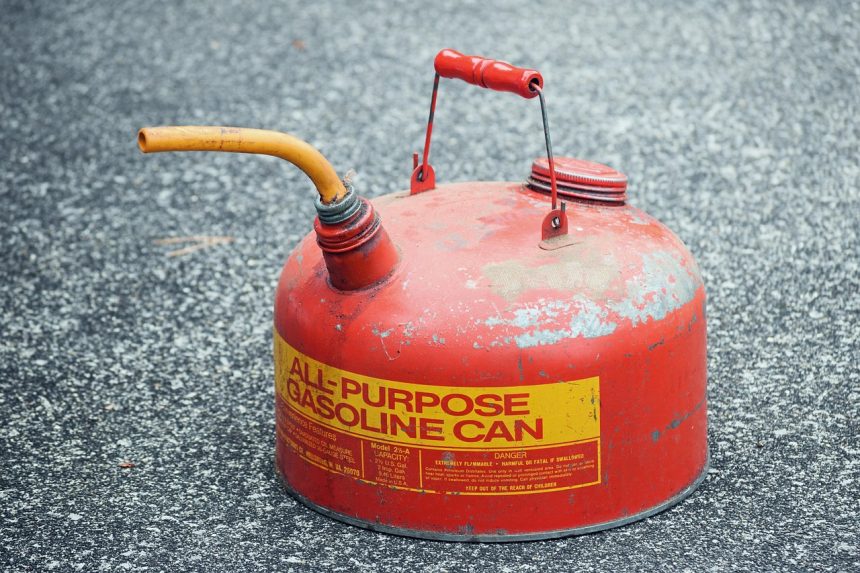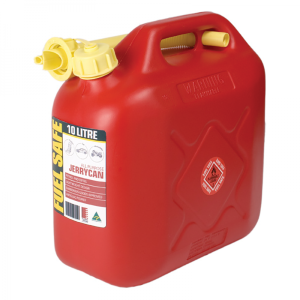Fuel Containers for Every Aussie: Heavy & Light Duty Safety Guide
Picture this: it’s a scorching summer day. You’re packing the ute for the farm, filling up the mower for the backyard, or you’re on a fireground, prepping for the shift ahead. Whether you’re a family getting ready for bushfire season, a renter storing backup fuel for a generator, or a firefighter managing supplies for your crew, one thing’s for sure—safe, reliable fuel containers make all the difference.
This guide is your no-nonsense handbook for choosing, using, and storing fuel containers—both heavy and light duty—in any situation. We’ll break down the types, the rules, the mistakes, and all the practical steps you need to stay safe at home, on the road, or on the frontline. If you’ve ever wondered, “Which fuel can do I actually need?” or felt overwhelmed by the options and warnings—don’t stress. You’re not alone. Let’s sort it out together.
For a huge range of tough, compliant fuel cans and jerry cans—built for Aussie conditions—check out the
full range of heavy and light duty fuel containers at Outback Equipment.
- Understanding Fuel Container Types
- How to Choose the Right Fuel Can
- Safe Storage Tips—Home, Vehicle & Work
- Practical Steps for Refuelling
- Common Mistakes & How to Avoid Them
- Lessons from the Fireground & the Backyard
- Extra Advice for Renters, Families & Crews
- FAQs & Real-World Tips
Understanding Fuel Container Types
Think steel or extra-thick plastic, usually from 10L up to 25L or more. Built for the long haul—think bushfire response, contractors, road crews, and remote travellers. Heavy duty cans handle knocks, UV, and rough use.
Lighter plastic or small metal cans, usually 5–10L. Perfect for topping up the mower, emergency use at home, or storing spare fuel safely in the shed. Easier to lift and pour—great for kids (under supervision), elderly, or anyone with mobility issues.
The main thing is this: choose a fuel container that’s *made for the job*—never a random bottle, water jug, or old paint tin. Certified fuel containers are built to handle flammable liquids safely, with strong seals, vents, and proper spouts.
“One crew I worked with during a hot December kept an extra heavy-duty jerry can on every appliance. We never skimped on quality—it was about safety, not just convenience. That one habit meant fewer leaks, faster refills, and no nasty surprises during 16-hour shifts.”
How to Choose the Right Fuel Container
For Home, Farm, and Everyday Use
Start by asking yourself: “What am I storing, and how much do I actually need?” For most homes, one or two 10L fuel containers is enough to get you through a power outage, run a generator, or refill the mower. If you live in the bush, consider a couple of heavy-duty cans for extra supply.
Always check that your container is:
- Clearly labelled for petrol, diesel, or other fuels
- Australian Standard (AS/NZS 2906:2001) compliant
- Fitted with a child-safe cap and proper vent
- Free from cracks, rust, or old paint inside
For Fire Crews, Contractors, and Rural Properties
On the fireground or in remote settings, you need gear that lasts. Go for thick-walled plastic or steel, high visibility, and cans with solid handles and locking lids. Look for colours that match the fuel—red for petrol, yellow for diesel, blue for water, and green for mixed or specialty fuels. Labelling matters, especially when the adrenaline’s running.
Safe Storage Tips—Home, Vehicle & Work
At Home or in the Shed
Store fuel containers in a cool, shaded place, out of direct sunlight and away from any open flame or ignition source. Never keep fuel inside the house—use a ventilated shed or a dedicated metal cabinet if you can. Keep containers off the ground on a shelf or raised platform to prevent water pooling or rust.
In Your Car, Ute, or Truck
Secure all fuel containers upright and away from the passenger area. Use a tie-down or bracket—don’t just toss them in the boot or on the tray. Avoid overfilling and make sure the cap is tight before you hit the road.
On the Fireground or Worksite
Set up a dedicated fuel point, away from the pump or main activity, with a fire extinguisher handy. Check every can for cracks and leaks before the shift. On hot, windy days, keep containers shaded or covered if you can—fuel expands and vents can release pressure.
Practical Steps for Refuelling
Step-by-Step for Safe Pouring
- Move the equipment outside, away from flames or heat.
- Turn off engines and let them cool before refuelling.
- Place the container on the ground—never refuel inside a car or on a trailer.
- Remove the cap slowly, allowing any built-up pressure to release safely.
- Use a funnel or spout to avoid spills and splashes.
- Never smoke, use lighters, or create sparks near fuel cans.
- Clean up any spills straight away—absorb with sand, not water.
- Close the lid tightly and store the container safely when finished.
Most incidents happen in a rush—slow down, double-check, and if something feels off, stop and sort it. Don’t let routine breed risk.
Common Mistakes & How to Avoid Them
“I’ll just use this old milk bottle”—it might seem handy, but these containers can break down, leak, or react dangerously with fuel. Always use proper, certified cans.
This one catches out both old hands and newbies. Heat causes fuel to expand and build pressure—vented or not, it’s a fire risk. Keep it cool and shaded.
If you can’t remember what’s inside or how old it is, you can’t be sure it’s safe. Labelling helps at home and is a must for teams or crews.
A lot of near-misses on the fireground come from small mistakes—mixing up cans, grabbing the wrong fuel, or storing too close to the action. One extra minute of checking can save hours of clean-up (and risk).
Lessons from the Fireground & the Backyard
After years working with families and fire crews, I’ve seen it all—from home garages stacked with “mystery cans” to frontline vehicles with fuel containers duct-taped shut. Most accidents happen because someone’s in a rush, or thinks “it’ll be right just this once.”
For fire crews, a missing label or a cracked can might mean equipment down at the worst moment. That’s why most crews check their fuel points at the start and end of every shift. If it’s routine on the fireground, it’s a good habit at home too.
Extra Advice for Renters, Families & Crews
Renters & Apartment Dwellers
If you’re in a unit or flat, check your tenancy agreement before storing any fuel. Most buildings restrict flammable liquids inside—so stick to a small, compliant can, stored outside (like in a lockable cage or secure shed). Never keep fuel on a balcony or near windows.
Families & Homes with Kids or Elderly
Choose lightweight containers that are easier to lift and pour. Store them out of sight and out of reach—lock them if possible. Teach everyone in the household what “fuel safety” means, even if it’s just the basics: never play with fuel, always tell an adult if there’s a spill.
Fire Crews, Teams & Emergency Services
Make fuel checks a part of your pre-start and pack-up. Assign one person to manage the fuel point—label, rotate, and replace containers as needed. Keep an incident log of any spills or problems. In the thick of a busy campaign fire, clear routines prevent chaos.
FAQs: Your Fuel Container Questions Answered
No—always store them in a ventilated shed or cabinet, away from the living area. Fuel fumes can be a fire and health risk indoors.
Look for “AS/NZS 2906:2001” marking, a child-safe cap, and a sturdy spout. Avoid old, damaged, or unlabelled containers.
Petrol and diesel degrade over time. Use within three months for best results—especially for generators or pumps. Rotate stock every season.
Always use heavy-duty, well-sealed cans, upright and strapped down. Assign a crew member to check for leaks before and after each trip. Label everything—especially during a busy campaign.
No. Always use separate, clearly labelled containers. Mixing fuels can damage engines and create a real safety hazard.
Check every can before you head out. Make sure it’s full, labelled, and not leaking. On the fireground, keep your fuel point tidy and assign someone to keep track of stock and usage. Never let it become an afterthought.
Take Your Next Step:
Grab five minutes to check your fuel containers today—look for cracks, leaks, or missing labels. Talk with your family, housemates, or crew about safe storage and smart habits. Little things make the difference when it matters.
If you found this guide helpful, share it with someone who could use a reminder. You never know when simple safety steps will save the day.




